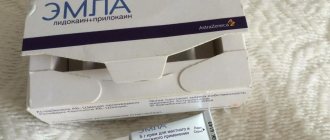Composition and release form of Feresol
They produce a solution intended for external use. 100 g of solution contains the following active ingredients:
- Tricresol 40 g;
- Phenol 60 g.
In dark glass bottles of 100 g, complete with an applicator.
Instead of the discontinued drug Ferezol, today its improved formula is being produced - the drug Verrukacid®, which at JSC Retinoids was purified from ortho- and para-cresols, retaining only the main active ingredient - metacresol. As a result, the drug has become more active, and to achieve the same effect it must be used in smaller doses, which means it is less toxic. In addition, Verrukacid® has a convenient packaging with an applicator.
Laser Application
A dermatologist can offer the patient several ways to remove tumors. Naturally, the patient will give preference to the one that is the least traumatic and painless. Laser removal of papillomas and warts allows you to quickly get rid of the problem.
The microfractional beam evaporates the growth without affecting healthy tissue. To completely remove the tumor, one procedure is sufficient. There are no scars after using the laser. In addition, blood loss is also excluded.
- Diabetes.
- Blood diseases.
- Oncology.
- Pregnancy.
- Autoimmune diseases.
- Tendency to keloid scars.
- Epilepsy.
After the procedure, the wound heals within two weeks. Many patients who have chosen this method of treatment leave positive reviews on the Internet. The consequences of laser removal of papillomas and moles are clean and healthy skin. Just a few days after the procedure, the patient completely forgets about the eliminated growths. There are no side effects after using the laser.
Method of application of Feresol and dosage regimen
According to the instructions, Ferezol is intended for external use only. Apply the drug or an analogue of Feresol to the damaged area of the skin using an applicator, avoiding its contact with healthy neighboring areas, as well as mucous membranes.
For filiform warts and small papillomas (up to 2 mm in size), Feresol is applied once.
For small warts and larger papillomas (2-3 mm in size), the drug is applied three to four times, taking a break to allow the applied solution to dry.
Before using a solution to remove plantar warts, warts with a dense keratinized surface on the hands, dry calluses, keratomas, it is necessary to remove all horny layers from their surface. To do this, you need to apply a keratolytic ointment, for example, salicylic 10%, to them for several hours. After this, the lubricated area is covered with plastic wrap or compress paper, and a gauze bandage is made on top. You can cover the area with adhesive tape.
After removing the bandage or adhesive plaster, the skin must be steamed in hot water with soap and soda for ten minutes and all horny layers must be removed (cut off with forceps or nail scissors). After the skin has dried, it is necessary to apply Feresol several times at intervals of 4-5 minutes for drying.
According to reviews, it is enough to treat dry calluses and keratomas with Feresol three to four times, taking short breaks to allow the applied solution to dry.
Warts on the soles and hands are treated with the solution 7-10 times with a short interval for the applied solution to dry.
To avoid burns to the surrounding area of skin during repeated use of the drug or an analogue of Feresol, it would be advisable to lubricate it with zinc paste. After the last applied layer of solution has dried, the zinc paste can be removed using a dry gauze swab.
It is not recommended to remove genital warts yourself. Their treatment with Feresol and subsequent removal are carried out in the treatment room by a urologist or dermatovenerologist. In this case, the drug is applied once or twice at intervals to allow the solution to dry.
If necessary, re-treatment can be carried out after a week's break. Four to five procedures are allowed.
Why remove tumors
Moles and papillomas can pose a real threat to human health and even life. For example, a nevus can degenerate into one of the most aggressive types of cancer - melanoma. Usually the tumor progresses rapidly, since the body’s response is weak or absent altogether. Strong immunity can suppress the development of the papilloma virus. Often, the growths that appear disappear on their own without a trace. If the immune response is insufficient, the tumor will not disappear. It may even increase in size. In place of one papilloma, several appear at once. The growths can become injured and become infected. In addition, papilloma can cause the development of squamous cell carcinoma and other types of cancer. Removal of moles and papillomas can be carried out only after consultation with a doctor.
If there is a suspicion of malignant degeneration of the nevus, it must be eliminated with extreme caution and only in a medical facility. After the procedure, tissues are necessarily sent for histological examination. The same is done with suspicious papilloma. In this case, the optimal way to remove the tumor is surgery. Fortunately, not all nevi and papillomas are dangerous. They rarely develop into melanoma or other types of cancer. Most often, patients remove moles and papillomas for aesthetic reasons.
special instructions
Avoid contact of the solution with mucous membranes, in particular the mucous membranes of the eyes. In case of contact, rinse the area with plenty of water and go to hospital.
It is prohibited to bandage areas treated with the solution or seal them with adhesive tape. According to reviews, Feresol is not recommended to be reapplied until the previous layer has dried.
It is not recommended to apply the solution to formations located in heavily sweating areas and skin folds (interdigital spaces, anal area and inguinal folds), as this may cause burns to intact skin as a result of contact.
In case of a burn, it is necessary to use healing and anti-burn agents.
Radio wave removal
Radioknife is another effective means for removing moles and papillomas. But it can only be used if the doctor is sure that malignancy of these tumors has not occurred. In addition, the radioknife is contraindicated for pregnant women and people who have a heart rate sensor in their body. High-frequency waves evaporate nevus or papilloma cells. Healthy tissues are not harmed. The operation is painless and lasts no longer than 25 minutes. There is no bleeding, so there is no need for postoperative wound care.
Effect of the drug on HPV
The drug, called Feresol, is part of a group of agents that have a cauterizing and mummifying effect, and also has a pronounced bactericidal effect on the treated area.
As a result of exposure to a solution in pathogenic microorganisms, protein coagulation of an irreversible nature begins inside the neoplasm. The virus loses its functions and is destroyed.
The healing liquid is effective against most fungi, viruses and bacteria.
Due to destructive changes in skin tissues and mucous membranes, a cauterizing effect occurs.
A liquid nitrogen
Effective methods for removing moles and papillomas include cryodestruction. The procedure uses liquid nitrogen, the temperature of which reaches -196 °C. This substance freezes the liquid in the altered cells, after which they are completely destroyed. The procedure is painless, so there is no need for anesthesia. After using liquid nitrogen, crusts may remain at the site of the growth. They are completely rejected after two weeks. As a rule, there are no scars at the site of removal of a mole or papilloma. Unfortunately, this method cannot be used if a tumor biopsy is required.
Electrocoagulation
High-frequency current is often used to combat tumors. This method of removing moles and papillomas is quite painful, so the doctor must use anesthesia. During the procedure, the doctor brings a special needle to the head of the growth, which conducts an electric current. A spark occurs between the device and the skin. It burns the neoplasm cells to the very foundation. There is no blister after the procedure. But a scar forms on the surface of the skin, which resolves over time.
Pharmacy preparations for freezing tumors
A doctor must remove moles. You cannot do this on your own. Otherwise, you can provoke a malignant degeneration of the nevus. You can remove papillomas yourself. Provided that the doctor has previously examined the patient and confirmed the diagnosis. And also approved the method of treatment. To do this, you can purchase a remedy for papillomas at the pharmacy, which freezes tumors. The most effective drugs include:
- "Wartner Cryo". Removes not only papillomas, but also warts. The active ingredient of the drug has a temperature of minus 40 degrees, this is quite enough to destroy the cells of the growth;
- "Veruklin". The mixture of gases of this drug has a temperature of minus 50 degrees. The papilloma completely dies off just two weeks after using this remedy;
- "Cryopharma". Contains propane and dimethyl ether. At the exit from the cylinder, their temperature reaches minus 57 degrees. One package is enough to treat 12 tumors. Within two weeks after the procedure, healthy skin is completely restored.
Surgical intervention
The safest way is to remove moles and papillomas using a surgeon's scalpel. It is this method that is used if there is a suspicion of malignant degeneration of the growth. The operation is performed using anesthesia, so it is comfortable for the patient. Surgical intervention guarantees complete removal of the tumor, unlike laser or cryodestruction. In addition, the risk of relapse is eliminated. Many patients do not know where to remove papilloma and mole - in a private clinic or a public one. In fact, it all depends on the experience of the surgeon. It is important to find a qualified doctor. As practice shows, most often such specialists work in government agencies.
There are no contraindications to surgical removal of growths. Sometimes it is necessary to postpone the procedure. The doctor will advise you to undergo surgery in the following cases:
- Pregnancy and breastfeeding.
- Exacerbation of herpes.
- Inflammatory process.
- Exacerbation of a chronic disease.
- Viral or bacterial infection.
The duration of the operation usually does not exceed 60 minutes. After excision of the tissue, the doctor applies stitches. If necessary, the removed nevus or papilloma is sent for histological examination. The wound is treated with an antiseptic daily. Do not remove the resulting crust yourself. In addition, the affected area must be protected from exposure to sunlight for two to three months. Non-absorbable sutures are removed 10 days after the intervention. A barely noticeable scar remains after the operation. If the neoplasm was located quite deep, a more pronounced mark may remain. You can smooth it out using a special patch or absorbable cream.
Contraindications and overdose of the drug
The manufacturer prohibits the use of Feresol and its structural analogs for the removal of papillomas in the following cases:
- on skin larger than 20 square meters. cm.;
- when you are in the mole treatment area;
- on warts that are located along the edge of the mucous membrane or the red border of the lips;
- in the presence of high sensitivity to the active components of the product.
Can be used by women during pregnancy only in extreme cases. During breastfeeding, do not apply the solution to the hands and mammary glands.
It is prohibited to treat children under 7 years of age.
No cases of overdose have been reported, consumer reviews do not contain information about such cases.


